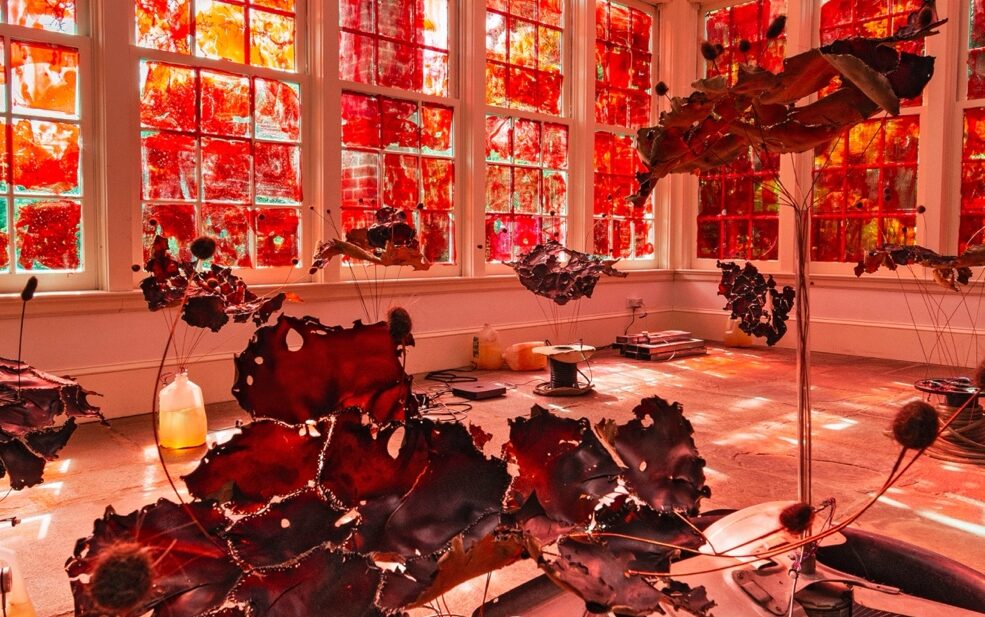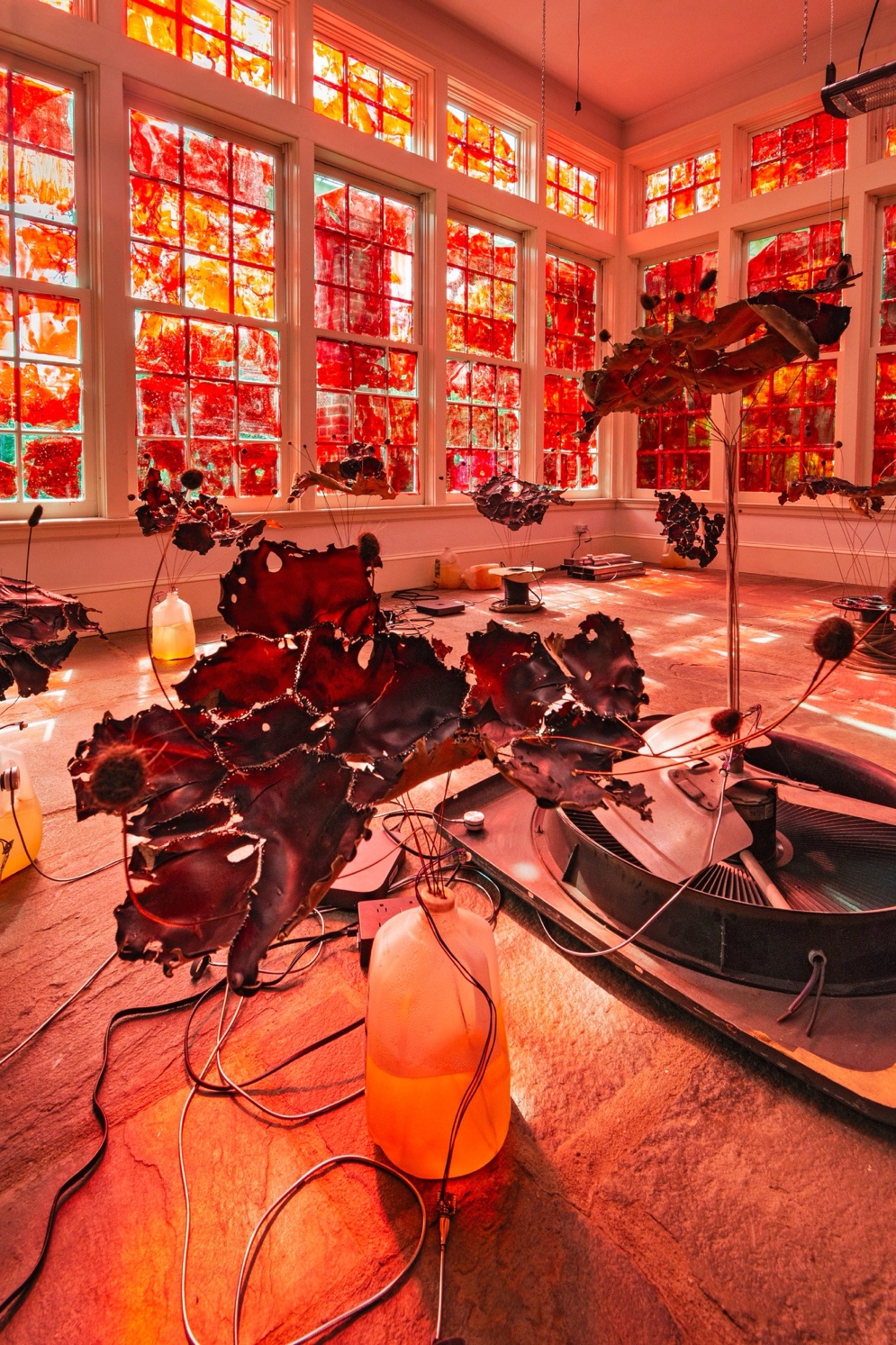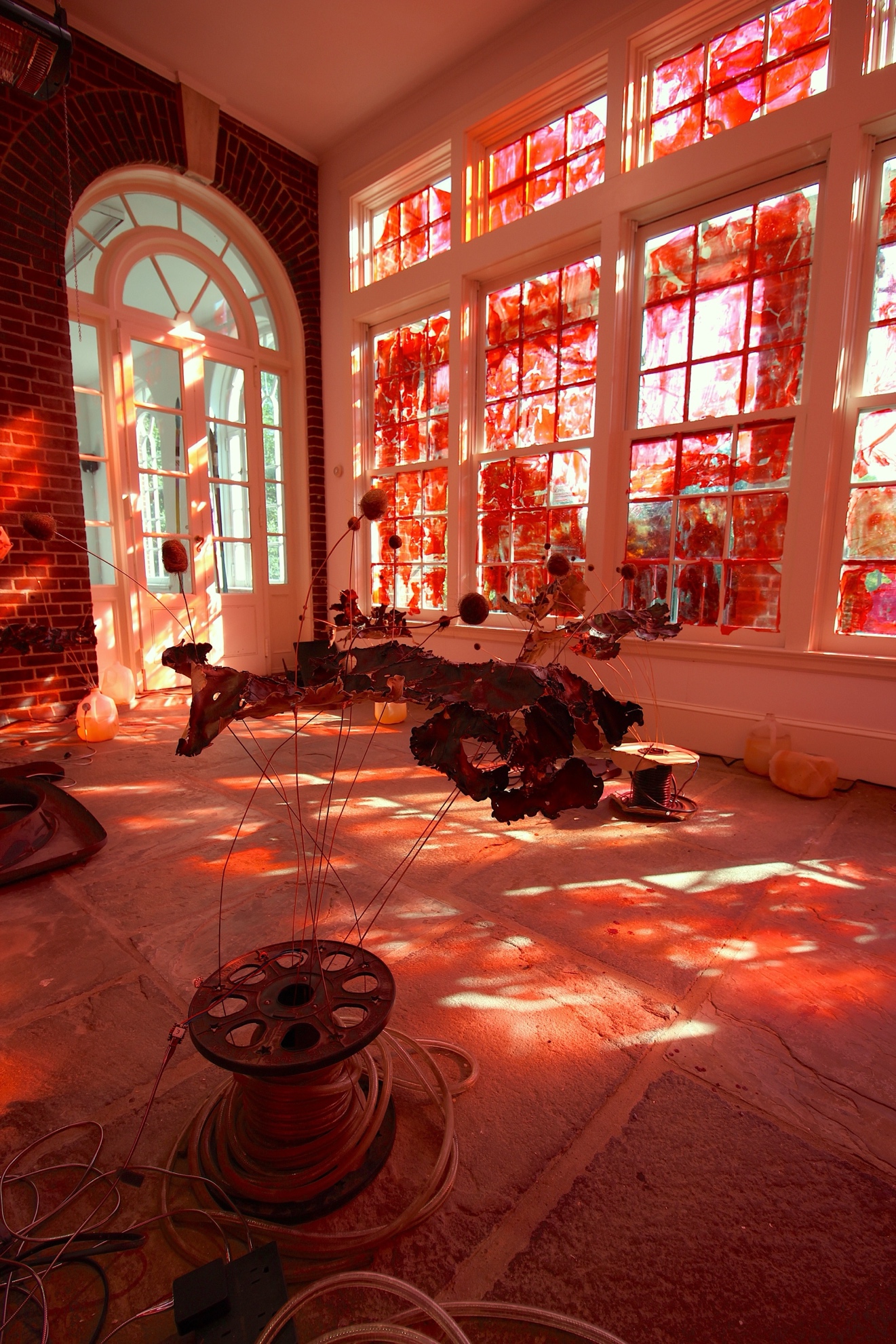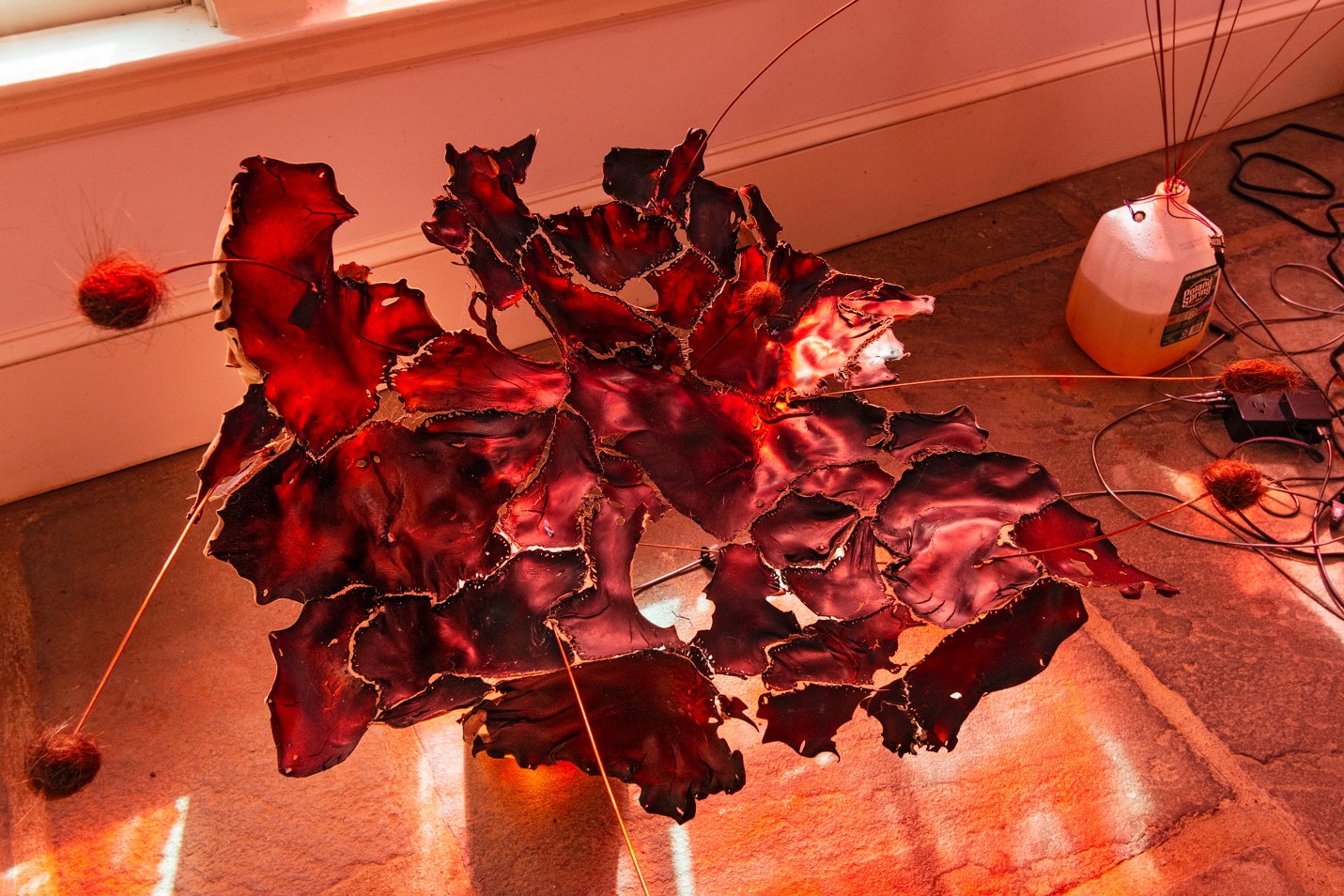Magdalena Dukiewicz Visualizes the Erotic Violence of Breathing


At the center of the room, eleven sculptural blooms rise from a makeshift, decomposing garden of plastic water jugs and copper rods. Each flower’s body is stitched from wood ear mushrooms—soft, ear-like, faintly corporeal—threaded with copper filaments and crowned with anthers made from the artist’s own felted hair. The mushrooms, revered in Chinese medicine for cleansing lungs and nourishing blood, serve as both metaphor and material conduit for respiration. Yet here, they appear damp and exhausted, their silky folds collapsing inward like spent organs. The use of hair introduces an intimate, bodily register: beauty, ritual, and selfhood entwined with decay. Copper corrodes slowly in the collected rainwater, tinting it green and blue over time. The sculptures are not static objects but living systems, undergoing chemical change that mirrors the slow violence of pollution.
It is Bloom, curated by Rachel Gugelberger, in which Magdalena Dukiewicz translates the invisible violence of environmental inequality into an atmosphere that can be felt on the skin. Installed in Wave Hill’s Sun Room, the immersive sound and material environment folds the city’s ecological data into breath, light, and heat. Sensors linked to air-quality monitoring stations across New York register fluctuations in levels of PM 2.5. These signals are transformed into sounds of human breathing. As pollution levels rise, the breath quickens, hardens, grows labored. The installation thus turns abstract metrics into embodied experience, making environmental injustice audible and affective.
Nine sensors feed this breathing system, but the installation itself also feels alive. Visitors trigger sonic responses as they move through the crimson space, their proximity causing the breathing to shift tempo and intensity. The air vibrates, responding to human presence much as a lung responds to inhalation. In this way, Bloom blurs distinctions between sensing and being sensed, data and flesh. Its atmosphere is not merely immersive; it is abject, charged, and, at moments, disconcertingly erotic.

Light filters through biomaterial membranes stretched across the windows, sheets of collagen, glycerin, and deep red organic dyes that cling directly to the glass. Bathed in heat from overhead lamps, the membranes contract and crack, gradually peeling away to reveal fragments of the manicured gardens beyond, boasting similar landscapes found in the affluent, serene neighborhood of Riverdale, home to Wave Hill itself. (Yet, the rest of the Bronx is disproportionately affected by industrial pollution and respiratory illness). The Sun Porch becomes a pressure chamber of some sort. With heat accumulating, the membrane grows fragile until the visitor becomes acutely aware of the processes of its deterioration. While the room initially glows like a translucent lung, it soon feels claustrophobic, even feverish, recording its own degradation and mirroring the slow entropy of the environment it represents.
This oscillation between attraction and unease defines Bloom’s affective power. Dukiewicz’s materials evoke both the lushness of organic growth and the residues of contamination. The installation’s erotic charge, from the glistening membranes to the vulnerable folds of fungi, operates as a mode of attention. It recalls Audre Lorde’s notion of the erotic as a source of power and knowledge, an intensity that collapses distance between self and world. Here, the erotic is ecological. To feel the air’s thickness, the sunlight’s persistence, and the sound’s vibration is to encounter the porous continuity between the human and the more-than-human.

Bloom resists purity or transcendence. Abjection becomes a language for environmental truth: an acknowledgment that the divisions between inside and outside, human and environment, are already breached. The air we inhale carries the residue of industry; the pollutants that circulate through the city circulate through our blood. Dukiewicz makes this condition palpable, giving form to what ordinarily remains disavowed.
In Bloom, implicated visitors’ breath with the city, feeling the friction of privilege and exposure in their own lungs. Dukiewicz’s Bloom insists on complicity, on intimacy with the very air that sustains and endangers us. Through its ferocious, erotic atmosphere and its slow material decay, Bloom reimagines environmental injustice as a shared condition, one that seeps into breath, matter, and sound.
Magdalena Dukiewicz: Bloom was on view September 20-November 2, 2025, in Glyndor Gallery at Wave Hill, 4900 Independence Ave, Bronx, NY 10471, United States.
You Might Also Like
Water-bound Semiotics of Displacement and Refuge
Nikita Gale Loosens Attitudes Around Sound With Her Performa 2023 Commission
What's Your Reaction?
Qingyuan Deng is a curator and writer, based between Shanghai and New York City. He is interested in relational aesthetics, experimental filmmaking, and the intersection between literary culture and visual arts.

